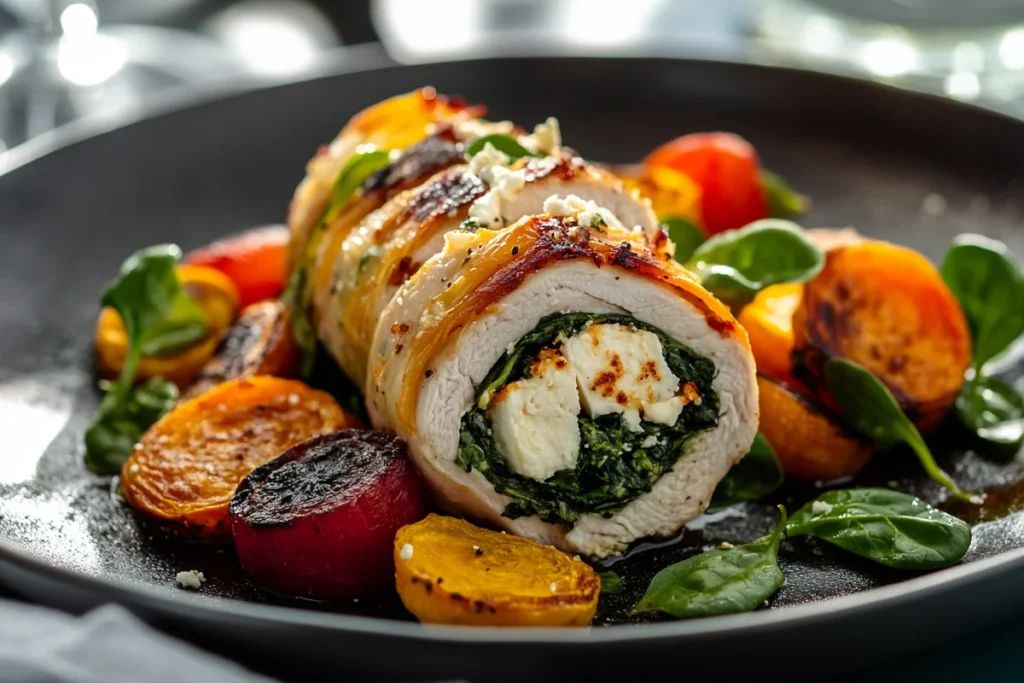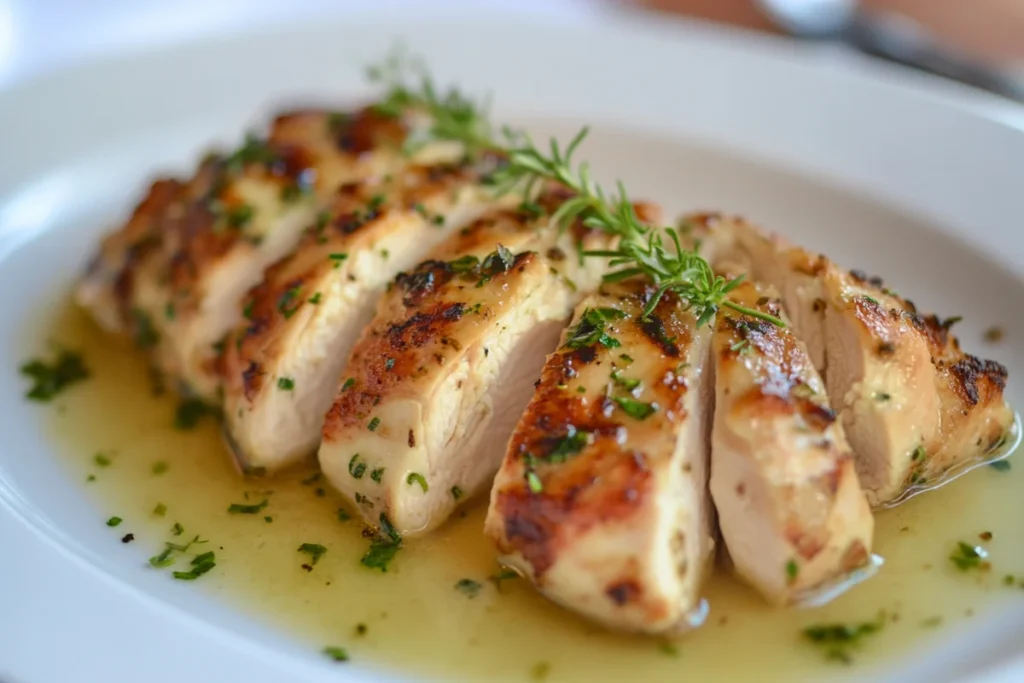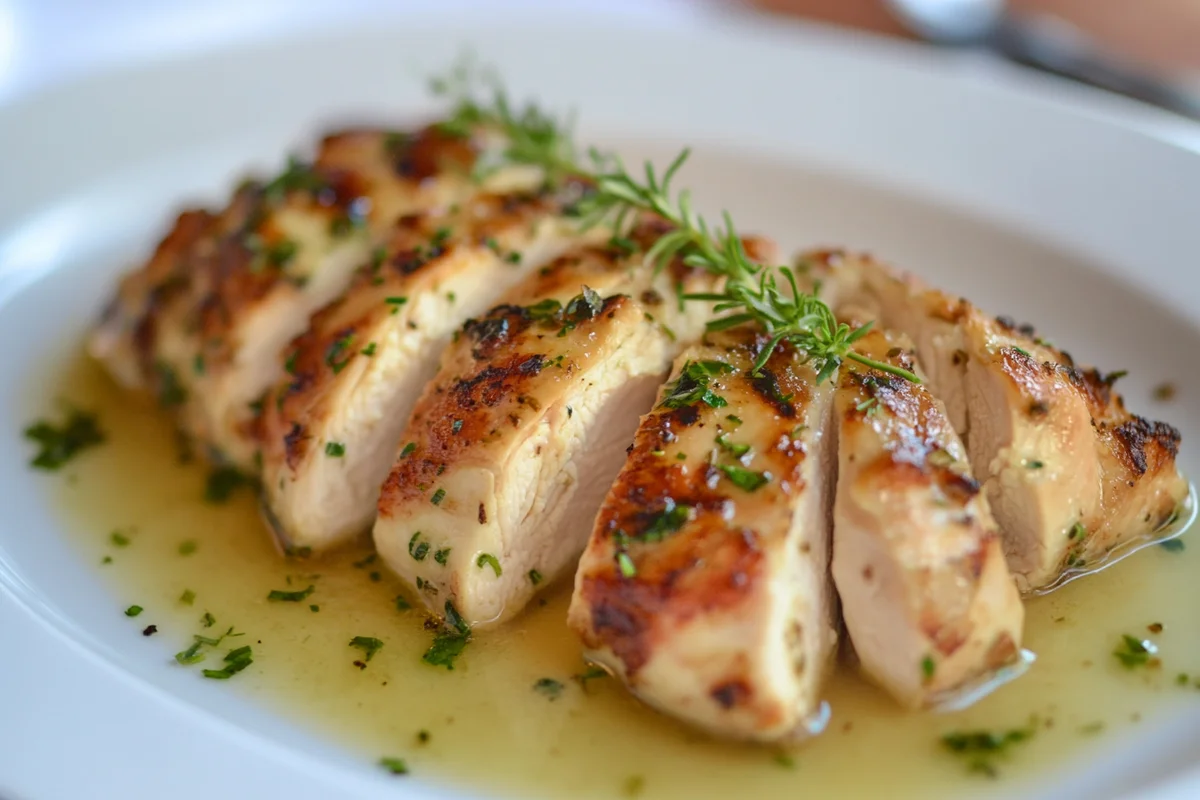
Chicken Ballotine vs Chicken Roulade: Key Differences Explained. These culinary creations, while similar, boast distinct techniques and presentations. This essential guide unlocks the secrets to understanding these flavorful dishes.
Understanding Chicken Ballotine vs Chicken Roulade
Chicken Ballotine vs Chicken Roulade represent two refined methods of preparing chicken, each offering a unique culinary experience. Both involve deboning, stuffing, and rolling chicken, however, their preparation and final presentation differ. The main difference lies in their construction and whether the chicken skin is retained.
Chicken Ballotine: A Classic Preparation
A Chicken Ballotine is traditionally made by deboning a whole chicken while keeping the skin intact. This skin then becomes the outer layer, encasing a flavorful filling. This filling often includes ground meat, herbs, and sometimes, other ingredients like mushrooms or nuts. The ballotine is then cooked, often poached or roasted, and served sliced. The intact skin provides an elegant presentation.
Chicken Roulade: A Versatile Alternative
Chicken Roulade, on the other hand, is more versatile. It typically uses chicken breasts or thighs, which are pounded thin and then spread with a filling similar to a ballotine. The roulade is rolled tightly and cooked, usually roasted or pan-fried. The skin isn’t necessarily retained, and the preparation method allows for greater flexibility with ingredients and flavors.
7 Key Differences Between Chicken Ballotine and Chicken Roulade
Delving into the specific distinctions between Chicken Ballotine vs Chicken Roulade reveals crucial differences that impact flavor, texture, and presentation. These differences are vital for chefs and home cooks alike who want to master these dishes.
1. Deboning Technique
The key difference in preparation centers around the deboning process. Chicken Ballotine requires meticulous deboning of the whole chicken, leaving the skin intact. This is a more challenging and time-consuming task than preparing a Chicken Roulade.
2. Skin Retention
Chicken Ballotine is defined by keeping the skin intact. This provides a protective layer during cooking and a visually appealing presentation. In contrast, Chicken Roulade doesn’t always retain the skin; often the breasts or thighs are pounded and rolled without it.
3. Filling Composition
While the fillings for both can be similar (ground meat, herbs, vegetables), Chicken Ballotine fillings often feature a coarser texture due to the larger size and more formal presentation. Chicken Roulade fillings can be more finely ground and customized.
4. Cooking Methods
Both Chicken Ballotine and Chicken Roulade can be poached, roasted, or pan-fried. However, due to its construction, Chicken Ballotine is often poached first to help maintain its shape and then roasted for color. Chicken Roulade is more commonly roasted or pan-fried directly.
5. Visual Presentation
The visual presentation is noticeably different. Chicken Ballotine, with its intact skin, offers a polished, refined appearance. Chicken Roulade, without the skin, tends to have a simpler, more rustic look. Image Placeholder: alt text includes “Chicken Ballotine vs Chicken Roulade comparison”.
6. Skill Level Required
Preparing Chicken Ballotine requires a higher level of culinary skill, particularly in the deboning process. Chicken Roulade is more accessible to home cooks, as it involves simpler techniques.
7. Overall Flavor Profile
While the flavor depends greatly on the filling, Chicken Ballotine tends to have a richer flavor profile, thanks to the skin and the more elaborate preparation. Chicken Roulade offers a lighter, cleaner taste due to the varied options for filling and lack of skin.

Galantine: The Ancestor of Ballotine and Roulade
Understanding Galantine provides historical context to Chicken Ballotine and Chicken Roulade. Galantine is a cold dish made from deboned, stuffed poultry or meat, typically encased in its skin and poached in stock. It’s an older preparation, more elaborate and ornate than either the ballotine or roulade.
How Galantine Differs
Galantines are typically more decorative and involve complex forcemeats and aspic. Unlike Chicken Ballotine or Chicken Roulade, Galantine is always served cold. It’s often a centerpiece dish, demonstrating culinary skill and artistry. The differences extend beyond temperature.
Galantine vs Ballotine: Core Distinctions
The critical difference between galantine and ballotine lies in the serving temperature and complexity. While Chicken Ballotine is served warm and can be prepared more simply, galantine is always served cold and involves more elaborate forcemeats and presentations. Image Placeholder: alt text: “Galantine display”.
Galantine vs Roulade: The Evolution
Galantine represents an older tradition. Chicken Roulade is a simplified, more modern approach, often using different cuts of meat and simpler techniques. Galantine is labor-intensive; the roulade allows for customization and quicker preparation.
Chicken Roulade: A Closer Look
Chicken Roulade is an incredibly versatile dish. It allows chefs and home cooks to experiment with various fillings and flavor combinations. This adaptability makes it a popular choice.
Variations and Fillings
Chicken Roulade can be filled with anything from spinach and cheese to sun-dried tomatoes and pesto. Its simple preparation enables cooks to create a dish that fits specific dietary needs or preferences. Image Placeholder: alt text: “Chicken Roulade with spinach and cheese filling”.
Serving Suggestions
Chicken Roulade can be served as a main course, sliced and plated with vegetables or grains. It also works well as part of a buffet or as an elegant appetizer. Its versatility lends itself to a wide range of culinary applications.
Popularity and Accessibility
Chicken Roulade’s popularity stems from its ease of preparation and adaptable nature. It is a dish that can be mastered by home cooks, offering a taste of refined cuisine without requiring advanced culinary skills.
Practical Tips for Preparing Chicken Ballotine and Chicken Roulade
Mastering Chicken Ballotine and Chicken Roulade involves following specific techniques and paying attention to detail. Here are some practical tips to help you achieve culinary success:
Deboning Techniques for Chicken Ballotine
When deboning a chicken for a ballotine, use a sharp boning knife. Work slowly and carefully to avoid tearing the skin. Practice makes perfect!
Filling Considerations
Whether you’re making a ballotine or roulade, ensure your filling is well-seasoned. Consider using a binder, such as breadcrumbs or eggs, to hold the filling together. Chill the filling before using it to make it easier to work with.
Cooking Methods and Temperatures
Poaching is a gentle cooking method that helps maintain the shape of a Chicken Ballotine. Roasting at a moderate temperature ensures even cooking and prevents the chicken from drying out. Chicken Roulade can also be pan-fried for a crispy exterior. Image Placeholder: alt text: “Chicken Ballotine being poached”.
Presentation Techniques
For a Chicken Ballotine, serve it sliced, showcasing the layers of chicken and filling. Garnish with fresh herbs or a flavorful sauce. Chicken Roulade can be presented similarly or served whole as part of a larger dish.
FAQ
What is the difference between chicken ballotine and chicken roulade?
Chicken Ballotine is made from a whole deboned chicken with skin intact, stuffed and rolled. Chicken Roulade uses chicken breasts or thighs, pounded thin, filled, and rolled; the skin isn’t essential.
What is the key difference between galantine and ballotine?
The key difference is serving temperature and complexity. Galantine is always served cold and is more elaborate, while Chicken Ballotine is served warm and is a more simplified version.
What is the difference between roulade and galantine?
Chicken Roulade is a simpler, modern dish using various cuts of meat and straightforward techniques. Galantine is a more traditional, labor-intensive dish with complex forcemeats, always served cold.
What is chicken roulade?
Chicken Roulade is a dish made by pounding chicken breasts or thighs thin, spreading them with a filling, rolling them tightly, and then cooking them, often by roasting or pan-frying.

